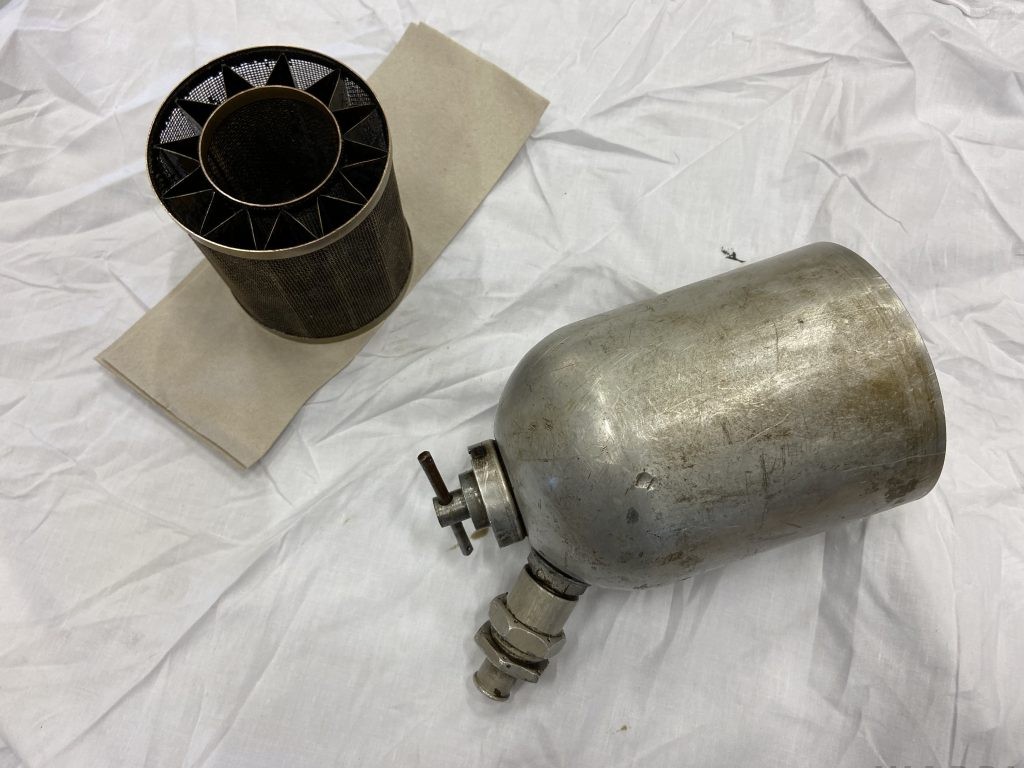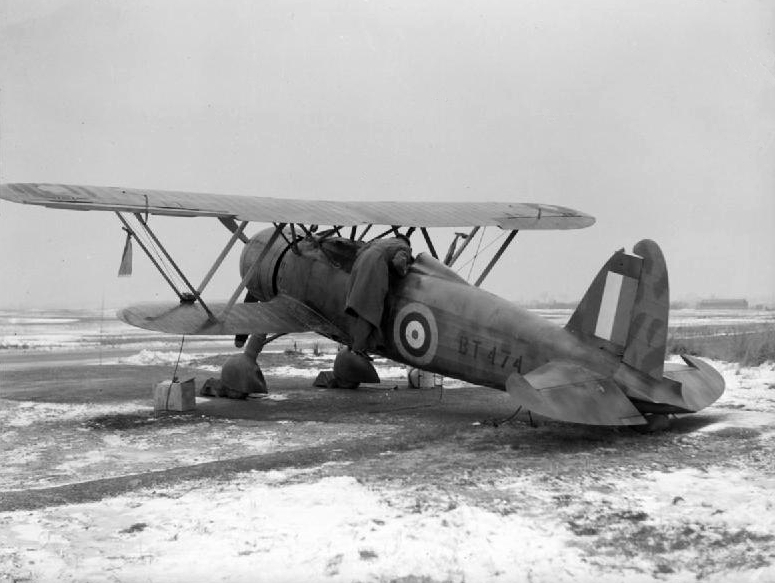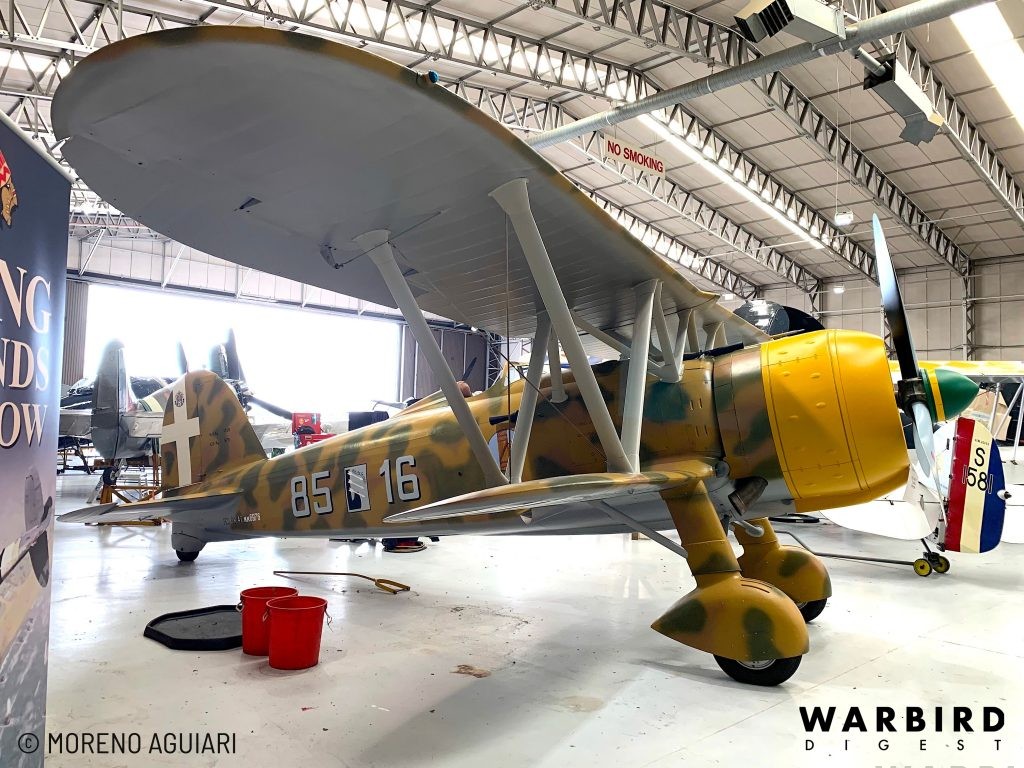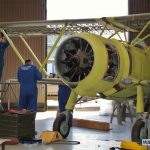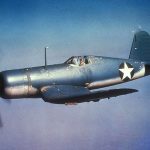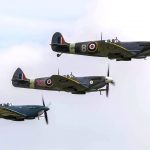With that in mind, well known Swedish pilot and engineer Mikael Carlsson (who has himself built and displayed a number of classic aircraft) has gained permission from the Flygvapenmuseum (Swedish Air Force Museum) to access the fully-refurbished J 11 in their collection, so he can take accurate measurements of components on the aircraft which require replicating for TFC’s example. Carlsson will use these data to remanufacture the necessary items for TFC, which is further testament to the great international effort involved in bringing this wonderful biplane another step closer to flying!
As most will recall, the Fiat CR.42 Falco was one of the very last biplane fighter designs to see combat, if not the last. At a time when most aircraft designers were creating sleek, monoplane fighters, Celestino Rosatelli – who was behind some of Italy’s successful Schneider Trophy racers – was still convinced that the bi-plane fighter could be a champion given the right engine and aerodynamics. Rosatelli’s vision resulted in the Falco, which first flew on May 23, 1938 at Torino Caselle airfield, near Turin. The type enjoyed a relatively successful production run, with just over 1,800 airframes rolling off the assembly line between 1939 and 1944 (more than any other WWII Italian fighter aircraft design). The Regia Aeronautica (Italian Air Force) operated the bulk of these aircraft, but Germany, Sweden, Spain, Croatia, Belgium and Hungary all fielded the type for periods as well. Interestingly, a Fiat CR.42 may well have been the last biplane to claim a combat victory, as a Luftwaffe-operated example reportedly shot down a 14th FG P-38 Lightning over Croatia on February, 8th, 1945!
Just four complete examples remain today, and none are currently flying… although that is set to change before too long.
FIAT CR.42 Falco SURVIVORS:
MM5701 – Combat veteran – RAF Museum, Hendon, England.
Fv.2543 – Combat veteran – Swedish Air Force Museum, near Linkӧping
MM4653 – Italian Air Force Museum, Vigna di Valle (Composite with parts from three aircraft from Sweden, Italy & France)
Fv.2542 – Combat veteran – The Fighter Collection, Duxford, UK
As already intimated, The Fighter Collection’s Falco is actually a former Swedish, 72 of the type having served in the Swedish Air Force, designated as J 11. This particular aircraft crashed in bad weather on a hillside near Tarnatjakko in April, 1942, sadly taking the life of her pilot Bertil Klintman. The wreck lay largely undisturbed where it fell for the next forty years before a salvage team recovered the remains by helicopter in 1983. A Swedish group did work on her restoration for a while, but The Fighter Collection bought the fighter in 1995 and transported her to the UK.
TFC sent much of the wreck to Italy, where the well-known Italian restoration groups AREA (Associazione Restauro Aeronautico) and GAVS (Gruppo Amici Velivoli Storici) rebuilt the fuselage to airworthy condition, while at the same time restoring the Italian Air Force Museum’s example. The fuselage returned to Duxford in the mid-2000s, but the project then seemed to go dormant. However, by the summer of 2010 the Falco was standing on her own undercarriage, with an engine installed and freshly reconstructed wings stacked neatly alongside in Hangar 2.S at Duxford. By 2012, the biplane was ready for fitting out, however TFC decided to out-source the job and moved the airframe to Vintage Fabrics at Audley End in Suffolk, a perfect choice since th company had prior experience completing the Italian Air Force’s CR.42 in 2004. Vintage Fabrics addressed the electrical systems, flying surface controls and the engine.
Because this Falco is being restored to airworthy condition, the restoration obviously has to comply with all Civil Aviation Authority (CAA) requirements both in the quality and traceability of materials used, the manuals, documentation and drawings for the aircraft type, not to mention compliance with modern safety requirements. The ‘mods’ raised to cover these design changes have all had to be processed, including where modern materials have been substituted for those detailed on the original drawings. GAVS have greatly assisted with the translation of original drawings and manuals, many of them written in ‘old technical Italian’.
According to internet sources, the team at Audley End acquired, or remanufactured numerous parts and components for the project. These include a pressure reducer and filter for the main undercarriage, along with the associated gauges. The fuel system required lots of new parts, including a hand pump and barrel for the fuel vent cap. They then needed to source an oil tank and radiator, pneumatic injectors, various gaskets, and blower controls. Vintage Fabrics has also obtained air pressure gauges from the original manufacturer, and an air bottle from an ex-Afghan IMAM Ro-37 Lince has provided enough information for the restorers to make the patterns to manufacture a new example. They also acquired and fitted newly-manufactured oil coolers, as well as new flying control cables made by Brunton’s of Musselburgh, UK. They removed the previously-fitted Fiat A.74 engine, after test-fitting the cowlings and engine controls, and sent it for overhaul to Vintage Engine Technology Ltd (Vintech) at Little Gransden.
Regardless, it is indeed a great international effort from all involved and another step closer to seeing this wonderful biplane in the air!










